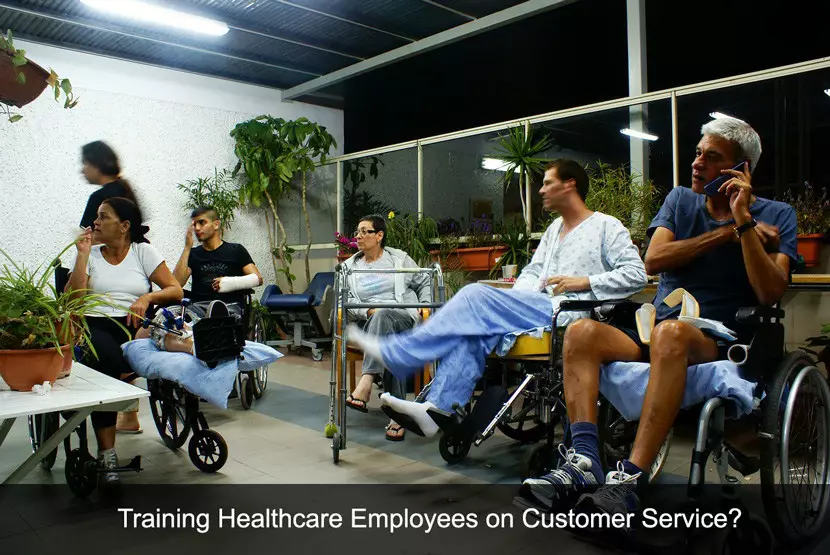Hospitality Meets the Hospital: Training Healthcare Employees on Customer Service

We just covered a game-changing concept in the healthcare industry – Value-Based Healthcare. This concept relies on the idea that healthcare providers and organizations must work to create a patient-centric experience where the goal isn’t primarily lowering the costs of healthcare, but instead the ability to integrate communication and patient engagement to create the best possible experience. Get smart and learn tips to improve your costumer service in the healthcare field.

The result is often a lowering of health care costs in an indirect way because care providers are better trained and educated so they’re more able to correctly diagnose and treat patients from the start, eliminating costly and potentially hazardous barriers to care.
Take advantage of our free White pages on: How You Can Assess The Effectiveness of Your Training
We mentioned at the end of our previous post the role customer service plays in the delivery of VBHC.
It becomes evident when delivering care where the focus is the patient and providing the best value for the individual, that customer service is also imperative.
Assessing Patient Customer Service
Before you can begin addressing potential gaps in the delivery of top-notch customer service to patients, you must first begin by learning where these gaps exist.
Many of the ways care organizations are learning more about their patient experience and how to improve it are directly borrowed from retail and hospitality customer service.
For example, one way to learn more about the overall experience of your patients is to conduct surveys and assessments.
Cherokee Health, based in Knoxville, TN, is one such healthcare group that relies on surveys to delve into the patient experience and pinpoint ways it can be improved.
The corporation has developed a fairly in-depth survey system that lets them see not just how they did, but the level of patient loyalty they can expect as a result. The feedback is then used to determine employee bonuses, creating a pay-for-performance system within the healthcare industry.
What’s unique is that rather than pay-for-performance based on something like how quickly patients leave the hospital, it’s more about how patients were treated so the focus becomes, as mentioned at the start of this article, creating value rather than simply lowering costs.
Training Tips for Patient-Centric Service
Great patient service begins and ends with how you train your employees.
Until recently, it’s something that wasn’t given a lot of attention in the healthcare industry and it began to take its toll.
What’s important to remember is that these people who come into the hospital or doctor’s office are still consumers and they have to be treated as such. Ultimately, health care providers have to be skilled, expert physicians, nurses, etc., but they also have to serve as a customer service representative, which can be a difficult undertaking.
Consider the following when training care providers on customer service-specific concepts:
- Make it clear from day one that providing excellent customer service isn’t optional – it’s a key part of each employee’s daily function. This means that training always incorporates customer service from new hire training for administrative staff all the way to doctors and organizational leadership development.
- Let employees know they will be accountable for how well or poorly they’re able to deliver great service to patients and their families. Much like what we see at Cherokee, it’s important to hold employees not just accountable for overall patient outcomes, but also for how the patient feels they were treated.
- Train and develop employees in a way that emphasizes the organization’s core values, which should include the provision of excellent service.
- Just as scenarios within learning management systems are one of the main ways health care providers are trained on certain aspects of providing actual care, they also make a valuable tool for providing customer service-like training.
- View Customer Service Training courses library.
Health care organizations are becoming more competitive and more driven by patient loyalty. Patient loyalty is primarily a function of how a patient feels they were treated during the receipt of their care. It’s more important than ever for medical organizations to remain in-tune with the needs and perceptions of patients as well as providing thorough customer service training to employees. This is what’s going to allow medical organizations to gain a competitive edge in a rapidly shifting industry.